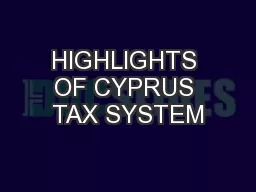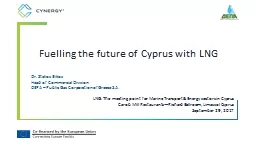PPT-The Cyprus Economy Nicos S. Kyriakides
Author : calandra-battersby | Published Date : 2018-11-03
Partner Head of Financial Advisory Services Deloitte Cyprus Limassol 20 March 2015 Two years after the financial crisis Cyprus at a Glance The Crisis of March
Presentation Embed Code
Download Presentation
Download Presentation The PPT/PDF document "The Cyprus Economy Nicos S. Kyriakides" is the property of its rightful owner. Permission is granted to download and print the materials on this website for personal, non-commercial use only, and to display it on your personal computer provided you do not modify the materials and that you retain all copyright notices contained in the materials. By downloading content from our website, you accept the terms of this agreement.
The Cyprus Economy Nicos S. Kyriakides: Transcript
Download Rules Of Document
"The Cyprus Economy Nicos S. Kyriakides"The content belongs to its owner. You may download and print it for personal use, without modification, and keep all copyright notices. By downloading, you agree to these terms.
Related Documents














